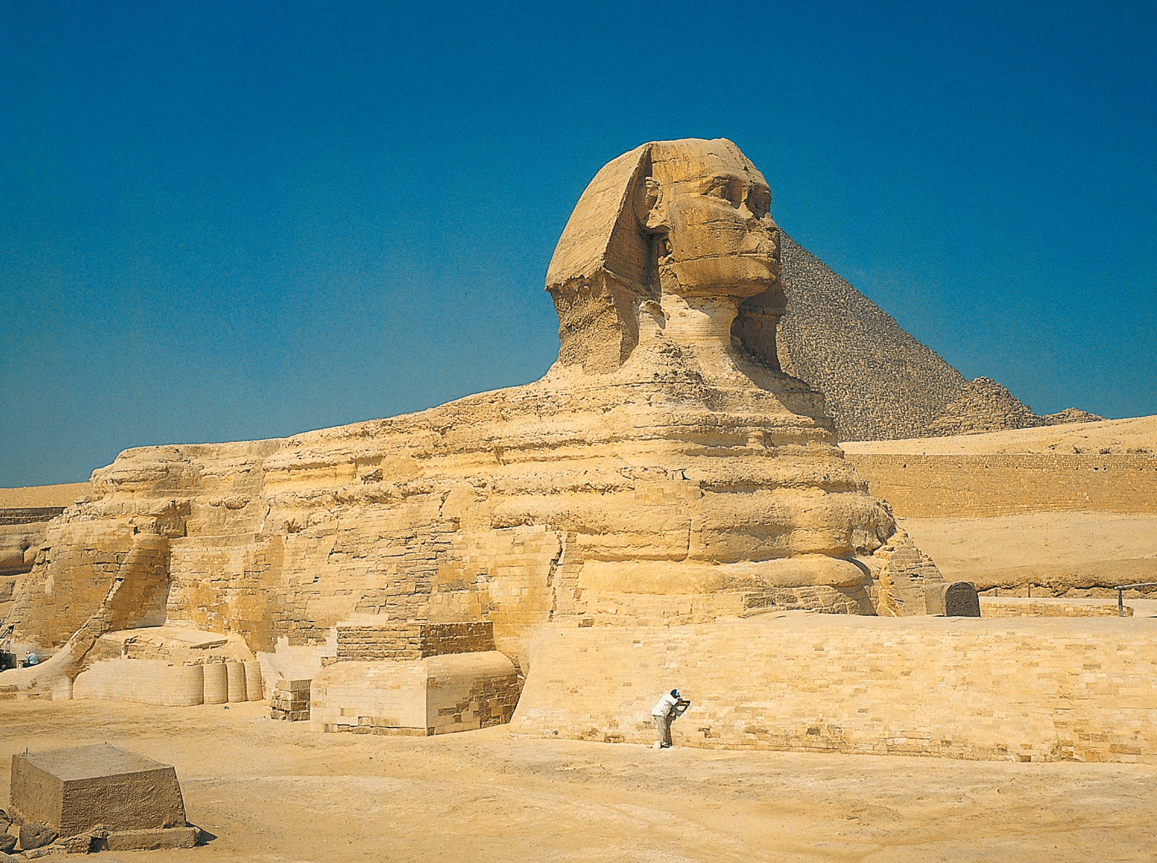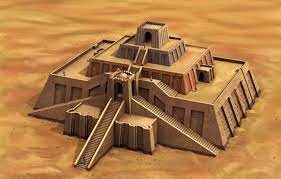Religion
Egypt
Why did early hunter-gatherers own few possessions?
Nomadic/moved from place to place
What was the most significant change in human societies during the Neolithic Revolution?
Agriculture/farming
What geographic feature did early civilizations in Mesopotamia, Egypt, and India develop by ensure they could feed a large population?
River/River Valleys
What religion follows the Eightfold Path?
Buddhism
What civilization on the Mediterranean coast developed the world's first alphabet?
Phoenicians
 What is the name of this Egyptian monument?
What is the name of this Egyptian monument?
Sphinx
Who created the first empire of India?
Chandragupta Maurya
What terms describes the lifestyle of early humans before the invention of agriculture?
hunter-gatherers
What did human societies do after they learned to farm?
Settle in villages/towns
What resource is most important for the survival of a civilization?
water
What term in Hinduism describes the belief that one's actions in this life determine one's place in their next life?
Karma
Which new development had a major impact on the population growth of Mesopotamia?
Irrigation (system)
The discovery of his tomb in 1922 helped us learn a lot about ancient Egyptian culture.
King Tut/Tutankhamen
What was the greatest mathematical contribution of ancient Indian civilization?
Zero/the use of zero as a number
Archaeologists believe that the first humans arrived in North America from which continent?
Asia
Why did early societies settle along rivers during the Neolithic Era?
water/irrigation for farming
Once civilizations could grow excess food thousands of years ago, people in those societies soon learned to __________________________
job specialization/ division of labor
In Hinduism, what social structure did not allow individuals to move up in society regardless of their individual abilities?
Caste System
What is the name of these religious and civic centers of ancient Mesopotamia? 
Ziggurat
Why were the pyramids built in ancient Egypt?
burial tombs/tombs for Pharaohs
Which language did the Aryans bring with them into India?
Sanskrit
Early hunter-gatherer societies were highly mobile and likely followed herds of _____________ as they moved from place to place.
animals
What is the period of time before written historical records called?
Prehistory
List at least 3 characteristics of a civilization.
- Stable food supply
- Social structure/ job specialization
- Religion
- Culture/Arts
- Technology
- Government/law
- Writing
- Cities
In Ancient Egypt, the ___ was a both the head of governmental and religious life.
Pharaoh (God/King)
What is Hammurabi most famous for?
Hammurabi's Code/ first written laws
What was the writing system of ancient Egypt called?
Hieroglyphics
Why do we know so little about the Indus Valley civilization?
Can't read their writing/writing undeciphered
What are objects called that were made and used by people of the past called?
Artifacts
What term is used to describe the process of making animals useful to humans?
domestication
Which belief is common to BOTH Hinduism and Buddhism?
Reincarnation
What did the Egyptians do to make sure the body and soul could reunite together in the afterlife?
Mummify the body/Mummification
Which pharaoh of Ancient Egypt defied tradition and ruled as a woman for over twenty years in the 1400s BCE?
Hatshepsut
In ancient Egypt, the word ___ was used to describe a series of rulers who shared a common family.
Dynasty
The caste system developed as a result of new rules and laws brought on by the invasion of WHICH nomadic society?
Aryans